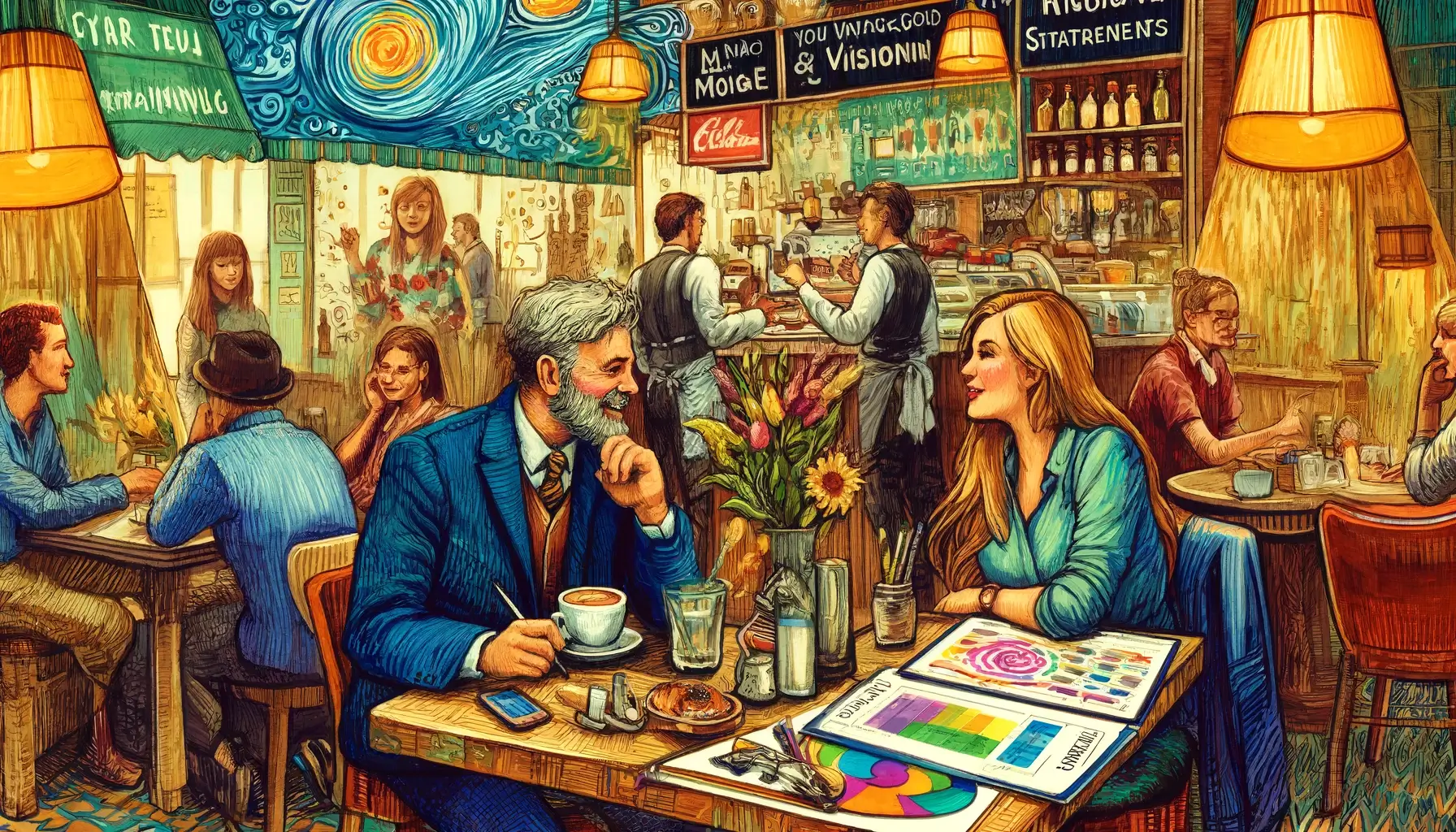“Too many companies want their brands to reflect some idealized, perfected image of themselves. As a consequence, their brands acquire no texture, no character, and no public trust.”
Richard Branson
Imagine a scene: a bustling café—the kind where the scent of freshly ground coffee dances with the hint of croissants in the air.
Here, amid the clinking cups and soft chatter, sits a seasoned marketer, let’s call him Bob. Bob has seen it all—trends come and go, logos change, taglines evolve. Today, he’s meeting a client who’s eager to create the next big brand, one that will “change the world,” as they say.
The client, let’s call her Sarah, arrives with a sparkle in her eye and a briefcase full of mood boards, vision statements, and market research.
“Bob,” she starts, with the enthusiasm of someone who’s just discovered the magic of espresso, “I want my brand to be perfect. Polished. Impeccable.”
Bob smiles, not the kind of smile that’s just for show, but the kind that comes from years of wisdom—and perhaps a few too many cappuccinos.
“Sarah,” he begins, “Let me tell you a story…”
Bob settles back into his chair, his gaze drifting slightly as if pulling memories from the air between them. Sarah leans in, sensing that this isn’t just any story—it’s the story behind every truly successful brand Bob has ever encountered.
And so, the tale unfolds.
In the world of branding, there’s a seductive allure to the idea of perfection. We imagine a brand that gleams like a new penny, one that reflects an idealized, flawless image.
But here’s the catch: Perfection is boring.
It’s the perfect cup of coffee that’s so hot it scalds your tongue, leaving no room for the rich, complex flavors underneath.
Authenticity, on the other hand, is like that same cup of coffee after it’s had a moment to cool—still warm, still inviting, but now layered with nuances you can savor.
Your brand’s core values are like that perfect brew. They should reflect who you truly are, not some airbrushed version of reality. Consumers aren’t fooled by a shiny exterior—they crave something real, something they can trust.
Consider the concept of consistency. Picture Bob’s favorite barista, who knows exactly how he likes his coffee—strong, with a hint of vanilla. He goes back, day after day, because he knows what to expect.
Similarly, your brand’s message and visual identity should be a comforting constant, like that familiar barista. Across every platform, your brand should sing the same tune, creating harmony in a world full of noise.
But what really gets to the heart of the matter is emotional connection.
Think of a brand like an old friend—one who’s seen you through thick and thin, who understands your quirks and still sends you a birthday card every year. Brands that engage on an emotional level don’t just sell products—they tell stories. They say, “We get you,” in a way that’s genuine and heartfelt.
With that in mind, let’s talk about storytelling.
Think about Dove’s latest campaign, “The Code.” They didn’t just launch an ad—they made a bold statement against AI-altered beauty standards. By pledging never to use AI to alter women’s images, they reinforced their long-standing commitment to real beauty. This isn’t just a campaign—it’s a powerful narrative. Dove is saying, “We see you as you are, and you’re beautiful.”
This emotional connection builds trust and loyalty because their audience feels truly understood and valued.
The most powerful brands aren’t those that shout their achievements from the rooftops. They’re the ones that weave a narrative, like Bob telling Sarah about the little café where he had his first great idea.
Stories humanize your brand. They make it relatable and memorable. They give your mission and values a voice that resonates.
But let’s be real—telling these stories takes guts.
It means being vulnerable, showing your flaws—but it also means connecting on a deeper level. So many random acts of marketing are the result of “playing it safe.” Yet, it’s courage that turns a brand from just a name into a trusted companion.
Genuine engagement flows naturally from this storytelling.
Picture this: a brand on a first date. You can spend hours perfecting your look and choosing the right words, but if you’re not present, not listening—it falls flat. Consumers crave a brand that engages, listens, and responds—one that consistently shows up with authenticity.
Consider brands like:
- Zappos: Known for exceptional customer service, Zappos even sent a free pair of shoes to a best man who lost his luggage, showcasing their commitment to listening and responding to customer needs.
- Warby Parker: Their home try-on program and responsive service show they value customer preferences, creating a seamless shopping experience.
- LEGO: By fostering creativity and providing a platform for fans to share their creations, LEGO builds lasting relationships with both kids and adults.
- Trader Joe’s: Known for friendly staff and unique products, Trader Joe’s often goes above and beyond, such as throwing surprise birthday parties for regular customers, creating a welcoming atmosphere where customers feel truly valued.
These brands get it—engagement isn’t just about the initial spark; it’s about showing up consistently and building a lasting relationship. In the end, they are creating stories, not just telling them.
One more example—this one on a larger scale: Domino’s Pizza and their “We’re Sorry for Sucking” campaign. In 2009, faced with harsh criticism for their pizza, Domino’s didn’t hide. They boldly admitted their flaws, featured their CEO in ads, showcased negative customer feedback, and promised to improve. This honesty and commitment transformed their brand, building incredible trust and loyalty.
Domino’s showed they were listening and ready to make changes.
So as you set out to build your brand, remember this: It’s not about perfection—it’s about connection. It’s about understanding that on the other end of your marketing efforts is a human being, someone looking for a brand they can trust, a brand that speaks to them on a deeper level.
And that is the essence of a successful brand.
As Bob finishes his story, Sarah leans back, the sparkle in her eye now mingled with a thoughtful glint.
“So, basically, you’re telling me I should embrace my inner chaos and hope for the best?” she says with a wry smile.
Bob chuckles, “Pretty much. Building a brand is a bit like learning to play an instrument. Sure, you’ll hit some wrong notes, but with some practice, you’ll create beautiful music.”
Sarah lifts her cup in a toast, “Here’s to branding adventures and hoping we don’t end up too out of tune!”
“To keeping it real,” Bob adds, clinking his cup with hers.
They both take a sip, ready to embark on a journey that’s as authentic and rich as the brew in their hands.





